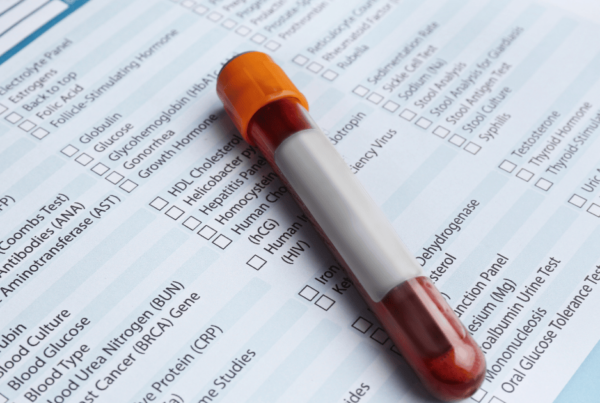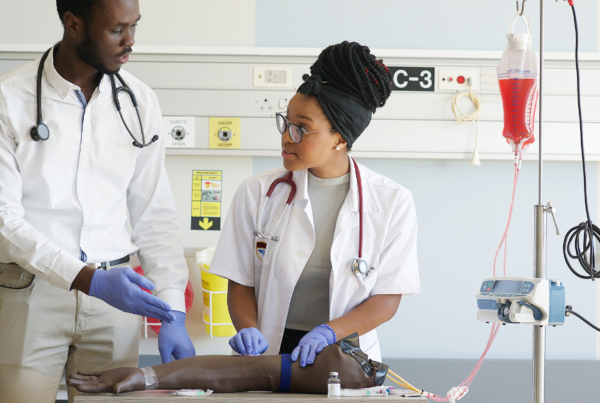In the world of phlebotomy, encountering a “hard stick” patient is a common challenge that requires skill, patience, and expertise. Understanding the hard stick meaning is essential for medical professionals who aim to provide the best care while ensuring patient comfort. This comprehensive guide delves into what it means to be a hard stick, why certain patients fall into this category, and practical strategies to make blood draws successful and less stressful for the patient as well as the healthcare professional.
| Key Takeaways |
| Understanding the hard stick meaning is crucial for effective phlebotomy practice. |
| Preparation and Technique: Proper patient preparation and utilizing specialized techniques can significantly improve success rates. |
| Communication is Essential: Open dialogue between the phlebotomist and patient enhances cooperation and reduces anxiety. |
| Patient Empowerment: Patients can take specific actions to facilitate easier blood draws. |
| Professional Development: Continual learning and adapting new strategies are vital for medical professionals handling hard stick patients. |
Understanding the Hard Stick Meaning
The term “hard stick” in phlebotomy refers to patients whose veins are difficult to locate, access, or puncture during a blood draw. This situation can arise due to various factors such as vein size, depth, or condition. For medical professionals, understanding the hard stick meaning is crucial for adapting techniques to successfully draw blood while minimizing patient discomfort.
Who Are Hard Stick Patients?
Hard stick patients are individuals who present challenges during blood draws because of one or more of the following reasons:
- Small or Fragile Veins: Some patients naturally have thin or delicate veins that are prone to collapse or injury upon needle insertion.
- Deep Veins: Veins located deeper beneath the skin surface can be harder to palpate or visualize.
- Dehydration: Lack of adequate hydration can cause veins to become less prominent and more difficult to access.
- Obesity: Excess adipose tissue can obscure veins, making them harder to locate and puncture.
- Chronic Medical Conditions: Diseases like diabetes, kidney disorders, or patients undergoing chemotherapy may have compromised vein integrity.
- Frequent Blood Draws: Repeated venipuncture can lead to scarred or damaged veins, increasing difficulty in future blood draws.
- Age Factors: Elderly patients may have veins that are less elastic and more fragile due to aging.
Best Practices for Phlebotomists
Preparation Techniques
Proper preparation sets the foundation for a successful blood draw, especially with hard stick patients.
- Hydration Encouragement: Advise patients to drink plenty of water before their appointment. Hydrated veins are fuller and easier to access.
- Warm Compress Application: Applying a warm compress to the intended draw site for 2-3 minutes can dilate veins, making them more prominent.
- Comfortable Environment: Ensure the patient is relaxed and the environment is calm to prevent vasoconstriction due to stress or anxiety.
Vein Location Strategies
Locating a suitable vein is often the most challenging aspect when dealing with hard stick patients.
- Use of Tourniquets: Apply a tight tourniquet above the draw site to engorge veins, but be cautious not to leave it on for too long as it can cause discomfort or hemoconcentration.
- Gentle Palpation and Tapping: Lightly palpate the area and gently tap to stimulate vein expansion. Avoid excessive slapping, which can cause veins to constrict.
- Vein Visualization Tools: Utilize devices like vein finders or transilluminators that use infrared technology to make deep veins visible.
- Alternate Sites: Consider veins in the hands, wrists, or even feet if arm veins are inaccessible, following institutional guidelines.
- Patient Positioning: Have the patient lower their arm below heart level to increase venous pressure and vein visibility.
Patient Communication
Effective communication enhances patient cooperation and reduces anxiety.
- Explain the Process: Provide a brief overview of what to expect, which can help alleviate fears and promote relaxation.
- Seek Patient Input: Ask if they have had successful draws from specific sites in the past.
- Provide Reassurance: Let them know that difficulty in drawing blood is not uncommon and that you are taking steps to ensure their comfort.
- Encourage Participation: Instruct them to clench and unclench their fist or perform gentle arm exercises to stimulate blood flow.
When to Seek Assistance
Recognizing when to involve another professional is a sign of good judgment.
- Follow Institutional Policies: Most facilities recommend seeking help after two unsuccessful attempts.
- Use of Specialized Personnel: Some institutions have vascular access teams skilled in handling difficult venipunctures.
- Alternative Methods: Consider requesting orders for alternative sampling methods, such as capillary draws, if appropriate.
Tips for Patients Who Are Hard Sticks
Patients can take proactive steps to improve their venipuncture experience.
- Stay Hydrated: Drink plenty of fluids starting 24 hours before the appointment to plump up veins.
- Avoid Caffeine and Alcohol: These substances can dehydrate the body, making veins less accessible.
- Warm Up: Keep the body warm with clothing or warm packs to dilate veins.
- Schedule Appropriately: If possible, avoid early morning appointments when veins may be less prominent.
- Communicate History: Inform the phlebotomist about previous difficult draws and what has worked in the past.
- Exercise: Light exercise before the appointment can increase circulation.
Minimizing Bruising and Discomfort
Bruising can be a common aftermath of difficult blood draws, but certain techniques can minimize this.
- Proper Needle Selection: Using a smaller gauge needle, like a butterfly needle, can reduce vein trauma.
- Immediate Pressure Application: Press firmly on the puncture site for at least 5 minutes post-draw to prevent blood from seeping into surrounding tissue.
- Avoid Strenuous Activity: Refrain from heavy lifting or vigorous exercise with the affected arm for the remainder of the day.
- Cold Compress: If bruising occurs, applying a cold compress can reduce swelling and discoloration.
Frequently Asked Questions
What does “hard stick” mean in phlebotomy?
In phlebotomy, a “hard stick” refers to a patient whose veins are difficult to locate, access, or puncture, making blood draws more challenging than usual.
Why are some patients considered hard sticks?
Factors such as small or fragile veins, deep veins, dehydration, obesity, chronic medical conditions, frequent blood draws, and age can contribute to a patient being a hard stick.
How can I improve my technique with hard stick patients?
Techniques include proper patient hydration, applying warmth to the draw site, using vein visualization tools, gentle palpation, and considering alternative sites or methods.
What should I do if I cannot locate a vein after multiple attempts?
Follow your facility’s policy, which often recommends seeking assistance after two unsuccessful attempts. Consider involving a more experienced colleague or specialized vascular access team.
How can patients prepare for a blood draw if they are hard sticks?
Patients should stay well-hydrated, avoid caffeine and alcohol, keep warm, communicate past experiences to the phlebotomist, and schedule appointments at times when veins may be more accessible.
What are some ways to reduce bruising after a blood draw?
A6: Applying immediate and firm pressure to the puncture site, avoiding strenuous activities, and using a cold compress can help minimize bruising.
Are there alternative methods for blood collection in hard stick patients?
Yes, alternatives like capillary blood sampling or using specialized devices may be considered, depending on the tests required and institutional protocols.
Conclusion
Navigating the challenges associated with hard stick patients is a significant aspect of phlebotomy. By fully grasping the hard stick meaning and implementing strategic techniques, medical professionals can enhance the success of blood draws while ensuring patient comfort and satisfaction. Continuous learning, patient education, and effective communication form the trifecta of excellent care in these situations.
For phlebotomists and other healthcare providers, mastering the art and science of dealing with hard stick patients not only improves clinical outcomes but also strengthens patient relationships, fostering trust and confidence in medical services.
Ready to master the art of phlebotomy?
Learn essential techniques for handling hard stick patients and boost your confidence in every blood draw.
Enroll now with Phlebotomy Now School and take the next step in your medical career!


